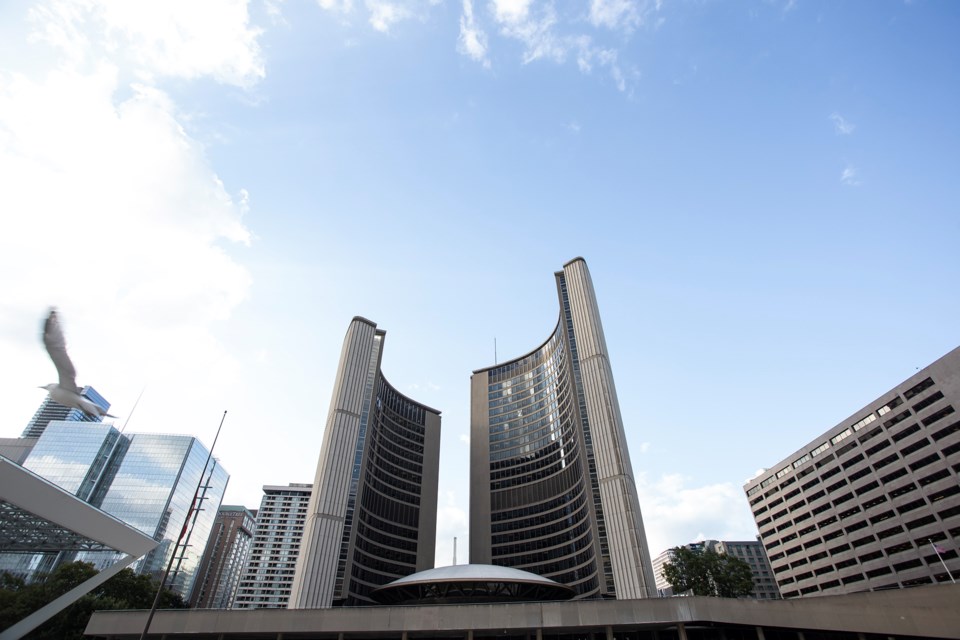If Toronto wanted to order its public servants back to the office full-time, it would face a major obstacle: there aren’t enough desks.
Earlier this month, Premier Doug Ford announced Ontario’s provincial civil servants will return to the office five days a week starting in 2026, urging municipalities to follow suit. Brampton quickly complied. But Toronto’s situation is more complicated.
Through its ModernTO program, launched in 2019, the city has cut nearly half its office footprint, selling or ending leases on 28 sites. Today, municipal workers are spread across 27 buildings — a number set to shrink further to 15 within two years. A city spokesperson said a comprehensive review of real estate assets would be needed before mandating a full-time return.
ModernTO has saved the city $335 million by terminating 24 leases, while unlocking prime land for redevelopment. Eight former office sites have been earmarked for housing, with three already moving forward — 610 Bay St., 931 Yonge St., and 277 Victoria St. — expected to deliver more than 1,000 new units. Others will add thousands more. The Bay Street project will also house a new paramedic hub and transplant centre.
The program, city officials stress, isn’t just about cost-cutting. “By repurposing these sites, the city is able to make better use of public land, create vibrant communities and deliver new affordable rental homes,” a spokesperson said.
Still, Ford’s call has reignited debate about productivity, economics, and the future of hybrid work.
Of Toronto’s 44,000 city employees, 70 per cent already work frontline jobs like policing, firefighting, and parks that can’t be done remotely. The remaining 12,000 office staff follow a hybrid model, coming in two or three days per week. None are fully remote.
Critics argue hybrid work has slowed city operations. “There is a lot of productivity that gets lost when people are working from home,” said Kelly Aizicowitz of advocacy group A Better City Toronto, pointing to service delays and downtown businesses that depend on office crowds.
CUPE Local 79, which represents most city staff, disagrees. “Hybrid work has been really successful,” said president Nas Yadollahi, adding that flexibility has helped retain staff in a tight labour market. The union pushed to enshrine hybrid work in its latest contract, but did not secure a guarantee.
For now, Mayor Olivia Chow has not committed to following Ford’s lead, saying only that the city will “examine” the issue.
With downtown office occupancy rates still about 20 percentage points below pre-pandemic levels, the debate over whether city workers should return full-time — and whether Toronto even has space for them — is far from settled.

